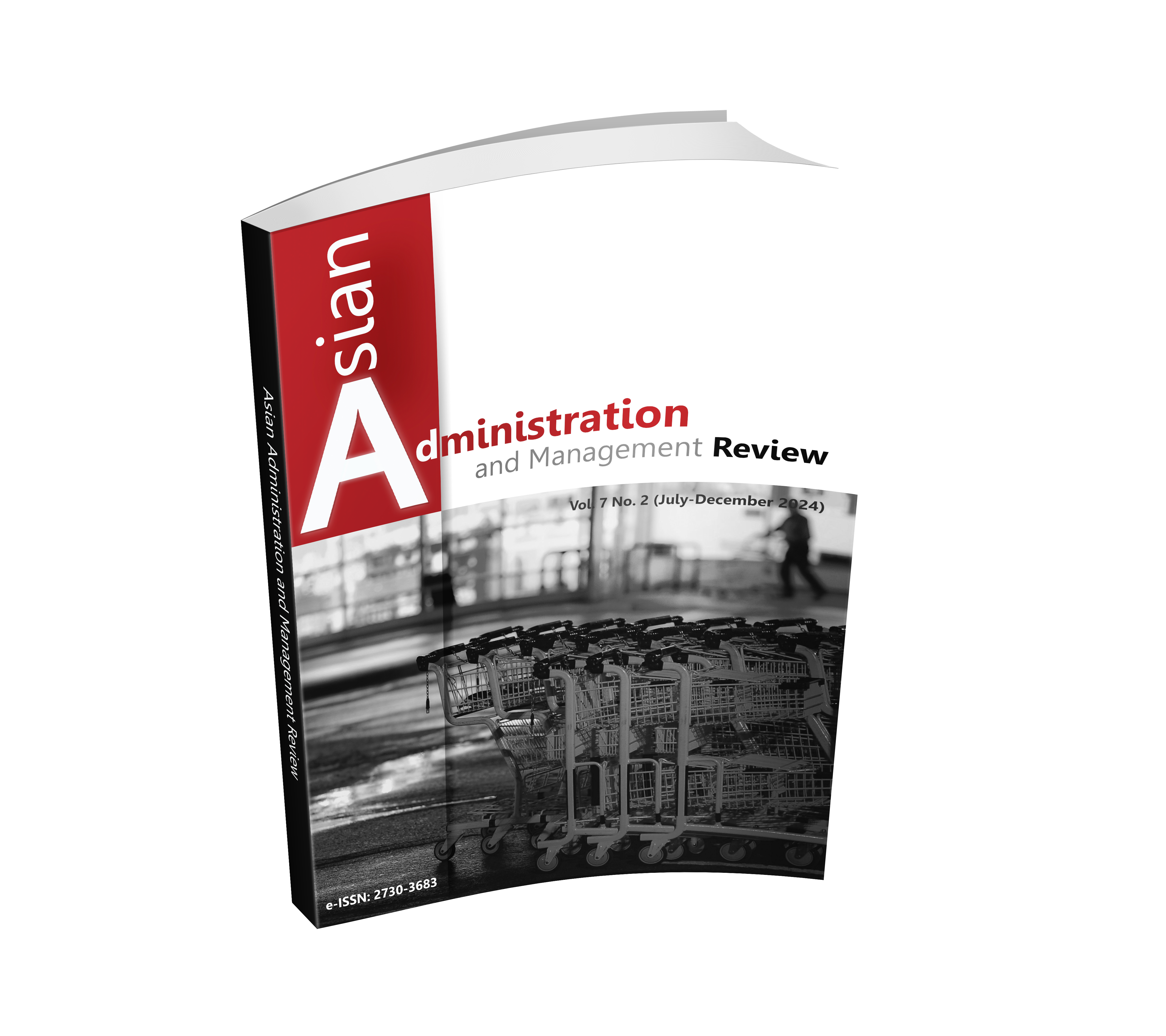MARKET STRUCTURE AND COMPETITIVE BEHAVIOR OF THAILAND'S CANNABIS CULTIVATION INDUSTRY
DOI:
https://doi.org/10.14456/aamr.2024.23Keywords:
Cannabis Cultivation, Competitive Behavior, Market Structure, HHIAbstract
The legalization of cannabis for medical and industrial use in Thailand in 2019 sparked growth in the cannabis cultivation sector. This transformative shift led to changes in market dynamics, influencing the industry's competitive behavior. This study examines the market structure and competitive behavior of Thailand's cannabis cultivation sector from 2019 to 2021, post-decriminalization. It assesses the market structure, focusing on the industry concentration and competitive dynamics, using the Herfindahl-Hirschman Index (HHI) to quantify cannabis cultivation area concentration. Results show an annual increase in the number of market firms, notably in 2021, with community enterprises surging by 291 since 2019. Cannabis cultivation expanded across all regions, indicating heightened market competition, and midstream-downstream industries were significantly related to cannabis farm presence in each district (P-value 0.004). HHI analysis reveals an average of 3,259.23 from 2019 to 2021, identifying a deconcentrated market in 2021, with increasing competition rates yearly. Findings suggest market behavior characterized by rising competition, expanding firms—especially community enterprises—and widespread cannabis cultivation farm distribution nationwide.
Downloads
References
Akomea, S., & Adusei, M. (2013). Bank recapitalization and market concentration in Ghana’s banking industry: A Herfindahl-Hirschman index analysis. Global Journal of Business Research, 7(3), 31-45.
Alvarez, A., Gamella, J., & Parra, I. (2016). Cannabis cultivation in Spain: A profile of plantations, growers and production systems. International Journal of Drug Policy, 37, 70-81.
Armstrong, M. (2021). Legal cannabis market shares during Canada's first year of recreational legalisation. International Journal of Drug Policy, 88, 103028.
Assanangkornchai, S., Thaikla, K., Talek, M., & Saingam, D. (2022). Medical cannabis use in Thailand after its legalization: a respondent-driven sample survey. PeerJ, 10, e12809.
Bednarek, Z., Doremus, J., & Stith, S. (2022). U.S. cannabis laws projected to cost generic and brand pharmaceutical firms billions. PLoS One, 17(8), e0272492.
Bresnahan, T., & Reiss, P. (1991). Entry and competition in concentrated markets. Journal of Political Economy, 99(5), 977-1009.
Caulkins, J., Bao, Y., Davenport, S., Fahli, I., Guo, Y., Kinnard, K., Najewicz, M., Renaud, L., & Kilmer, B. (2018). Big data on a big new market: Insights from Washington State’s legal cannabis market. International Journal of Drug Policy, 57, 86-94.
Caves, R., & Porter, M. (1978). Market Structure, Oligopoly, and Stability of Market Shares. The Journal of Industrial Economics, 26(4), 289-313.
Chou, J., Ng, L., Sibilkov, V., & Wang, Q. (2011). Product market competition and corporate governance. Review of Development Finance, 1(2), 114-130.
Dills, A., Goffard, S., Miron, J., & Partin, E. (2021). The Effect of State Marijuana Legalizations: 2021 Update. California: Cato Institute.
Giroldo, R., & Hollenbeck, B. (2021). Concentration, Retail Markups, and Countervailing Power: Evidence from Retail Lotteries (Working Paper MPRA 109039). Germany: University Library of Munich.
Hammersvik, E., Sandberg, S., & Pedersen, W. (2012). Why small-scale cannabis growers stay small: Five mechanisms that prevent small-scale growers from going large scale. International Journal of Drug Policy, 23(6), 458-464.
Haveman, H., & Nonnemaker, L. (2000). Competition in multiple geographic markets: The impact on growth and market entry. Administrative Science Quarterly, 45(2), 232-267.
Herfindahl, O. (1950). Concentration in the U.S. Steel Industry, Dissertion. New York: Columbia University.
Hirschman, A. (1945). National Power and the Structure of Foreign Trade. California: University of California Press.
Johnson, J., Hodgkin, D., & Harris, S. (2017). The design of medical marijuana laws and adolescent use and heavy use of marijuana: Analysis of 45 states from 1991 to 2011. Drug and Alcohol Dependence, 170, 1-8.
Kelly, E., & Formosa, M. (2020). The economic and cultural importance of cannabis production to a rural place. Journal of Rural Studies, 75, 1-8.
Ministry of Public Health. (2021). Registered Firms and Cannabis Cultivation Area in Thailand (2019-2021). Retrieved from https://hemp.fda.moph.go.th/FDA_MARIJUANA/staff/marijuana_report_public.
Morrison, C., Gruenewald, P., Freisthler, B., Ponicki, W., & Remer, L. (2014). The economic geography of medical cannabis dispensaries in California. International Journal of Drug Policy, 25(3), 508-515.
Narcotics Act No.7, 2019.
Rhoades, S. (1993). The Herfindahl-Hirschman index. Federal Reserve Bulletin, 79(3), 188-189.
Thai Food and Drug Administration. (2022). Cannabis Registration for Cultivation 2019-2021. Nonthaburi: Thai Food and Drug Administration.
Tirole, J. (1988). The Theory of Industrial Organization. Massachusetts: MIT Press.
Wanke, M., Sandberg, S., Macit, R., & Gülerce, H. (2022). Culture matters! Changes in the global landscape of cannabis. Drugs: Education, Prevention and Policy, 29(4), 317-322.
Yeoh, P. (2020). Legal challenges for the cannabis industry. Journal of Money Laundering Control, 23(2), 327-340.
Zinboonyahgoon, N., Srisuma, S., Limsawart, W., Rice, A., & Suthisisang, C. (2021). Medicinal cannabis in Thailand: 1-year experience after legalization. PAIN, 162, S105-S109.

Downloads
Published
How to Cite
Issue
Section
License
Copyright (c) 2024 Authors

This work is licensed under a Creative Commons Attribution-NonCommercial-NoDerivatives 4.0 International License.











.png)


